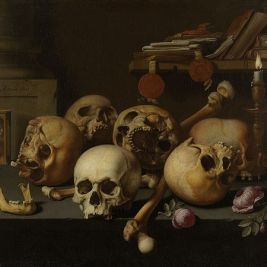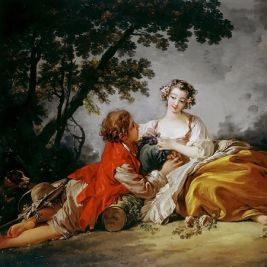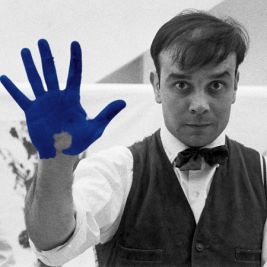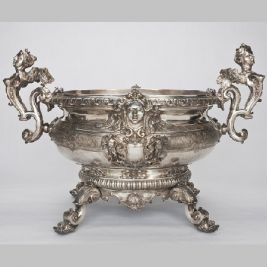
Reproduction is an accurate copy of a work of art: its essence, distinctive features, and merits
Reproduction (from Latin re-productio) is a printed copy of a work of art (painting, drawing, or photograph) created using technical means. A high-quality reproduction is often indistinguishable from the original to the average person. Modern printers and machines allow for a perfect representation on paper or canvas, capturing not only the tiniest details but also the texture of the original painting.
 Reproduction. Karl Bryullov. Italian morning, 1823
Reproduction. Karl Bryullov. Italian morning, 1823
Reproduction also refers to the process of creating printed copies of artworks. To accurately reproduce the colors and shades of the original, not only highly sensitive photographic equipment is needed, but also properly chosen lighting.
 Reproduction. Pavel Fedotov. The Matchmaking of a Major, 1848 and author's copy 1850-52
Reproduction. Pavel Fedotov. The Matchmaking of a Major, 1848 and author's copy 1850-52
Differences between Reproduction, Copy, Replica, and Other Similar Terms
 Reproduction. Ivan Aivazovsky. The Ninth Wave, 1850 and author's copy of the painting of 1857
Reproduction. Ivan Aivazovsky. The Ninth Wave, 1850 and author's copy of the painting of 1857
Reproduction is not the only term used to denote non-original works of art. There are other similar expressions:
- Author's reproduction is a printed copy of a work made by the author themselves or with their involvement. Such a reproduction visually doesn't differ from a regular one, but it is more expensive and its originality is confirmed by the author's signature.
- Replica or author's repeat is a newly created version of the original painting by the same artist. Such a work always differs in some aspects from the original (details, color palette, and even dimensions) and has artistic value. Many artists paint replicas upon request or to improve an existing version of the work.
- Copy is a version of a painting created by another artist, exactly replicating the original in style, technique, size, and other parameters. A copy made for fraudulent purposes is called a forgery. Beginner painters often create copies of well-known masters' paintings to refine their skills and enhance their own professional abilities.
- Painting based on a motif is a work of art created by an artist who is inspired by a masterpiece of another painter. The author takes the creative concept of their colleague (plot, composition, color scheme, style, technique) as a foundation and complements it with their own artistic ideas. By indicating that the painting is based on a specific work, the author pays tribute to the ingenious predecessor and preemptively protects themselves from accusations of plagiarism.
 Reproduction. Vasily Pukirev. Unequal Marriage, 1862 and author's copy of 1875
Reproduction. Vasily Pukirev. Unequal Marriage, 1862 and author's copy of 1875
 Reproduction. Alexei Savrasov. The Rooks Have Returned, original and replica
Reproduction. Alexei Savrasov. The Rooks Have Returned, original and replica
Advantages of Reproduction
The immense popularity of reproductions is logically explained by their numerous advantages. The most important benefits for the average person are as follows:
- Vast selection of available options. Modern art enthusiasts can acquire reproductions of almost any painting masterpiece and create a unique collection of artworks tailored to their taste.
- Cost savings. Original paintings by famous artists are very expensive, while reproductions are much more affordable for their owners.
- Ease of maintenance. Antique artworks, unlike mass-produced copies, require delicate care, temperature control, and maintenance of optimal humidity levels in the room.
- Minimal risk of theft. Criminals are eager to steal valuable antique paintings whenever there is a chance, while inexpensive reproductions are of no interest to them.
- Convenience in interior placement. Many famous works of art have large dimensions and are suitable for placement only in spacious palace halls or museums. Reproductions, on the other hand, can be acquired in any size according to one's own preferences and possibilities.
The Very Important Lot portal offers a unique opportunity for anyone interested to participate in art auctions in various countries online. Here, you can acquire antique items and purchase paintings directly from contemporary artists.


 Georges Braque - the founder of Cubism in world art
Georges Braque - the founder of Cubism in world art  Hermann Historica's Anniversary Auction is a triumph
Hermann Historica's Anniversary Auction is a triumph  Vanitas is a genre of art that prompts the viewer to contemplate the inevitability of death
Vanitas is a genre of art that prompts the viewer to contemplate the inevitability of death  Japandi style in interior design - a minimalist fusion of East and West
Japandi style in interior design - a minimalist fusion of East and West  Acrylic is a painting technique and a type of artistic paint: essence, history, advantages, application
Acrylic is a painting technique and a type of artistic paint: essence, history, advantages, application  Rococo: Peasant Idylls of Court Painters
Rococo: Peasant Idylls of Court Painters  Yves Klein: biography, creative works, the best paintings of the French artist
Yves Klein: biography, creative works, the best paintings of the French artist  Top 10 Most Famous Architects - The Greatest Master Builders in Human History
Top 10 Most Famous Architects - The Greatest Master Builders in Human History  Architecture is an ancient art of creating magnificent monumental masterpieces
Architecture is an ancient art of creating magnificent monumental masterpieces  English Silver Tableware - History, Fashion, and Styles
English Silver Tableware - History, Fashion, and Styles